Intel Z77 Motherboard Review with Ivy Bridge - ASRock, ASUS, Gigabyte, and MSI
by Ian Cutress on May 7, 2012 7:40 PM EST- Posted in
- Motherboards
- MSI
- Gigabyte
- ASRock
- Asus
- Ivy Bridge
- Z77
ASUS P8Z77-V Pro – BIOS
ASUS BIOSes, ever since we went graphical back in P67, have been at the top of presentation and usability of the graphical interface. Therefore, it would have been odd if ASUS had done something vastly different for Z77. Luckily, the same interface greets us – initial entry into the BIOS greets us in EZ mode (I still call it ee-zed, being a Brit), which displays the time, the motherboard, the BIOS version, the CPU, the CPU speed, the memory, temperatures, voltages, fan speeds and the boot order. As an entry screen it is very informative, suitable for most users to implement a power saving or turbo mode, or the boot order.
However, the meat of the BIOS is all in the Advanced mode, where the BIOS takes a more traditional look. Screens of interest here are the AI Tweaker, where overclocks are made. This screens below shows an applied Extreme Memory Profile, with MultiCore Enhancement enabled, memory set at the correct strap and additional voltage applied to the memory as defined in the XMP.
Adjusting memory subtimings occurs in the DRAM Timing Control, and DIGI+ Power Control allows adjustment of load line calibrations as well as current capacities should a user desire extreme overclocks. The CPU, VRM, iGPU and DRAM can all benefit from DIGI+ control
ASUS have had good fan profile options in their software, so the options in the BIOS are a little sparse in comparison to their OS offerings, though this could be down to BIOS limitations. Temperatures and fan settings are found in the Monitor section.
Software
ASUS’ AI Suite software is the stalwart of the operating system options, and over the chipset generations I have grown accustomed to it. ASUS is continually updating features in the software, both in relation to hardware changes but also to ideas and requirements of the users. Having all the software under one heading helps with organization and consistency. Now that it is also a few generations old, it no longer has the annoying delay in loading associated with previous versions.
TurboV Evo is the overclocking function of AI Suite. As in previous versions, there is an automatic overclock function (available in ‘Fast’ and ‘Extreme’ modes) as well as a set of manual options. Personally, I use this part of the software to test overclocks, and then apply them in the BIOS later. Therefore, if an overclock is unstable, it does not cause the system to not boot next time around.
ASUS has adjusted the software relating to DIGI+ in order have a more concerted effort to teaching users about it. Alongside the CPU DIGI+ and VRM DIGI+ options, we have a ‘Smart DIGI’ option that can enable the user to use low power DIGI+ settings, or a set of useful settings for overclockers.
Fan Xpert 2 is an upgraded take on the fan software previously distributed with ASUS products. In this instance, when Fan Xpert is loaded, it asks to be able to test all the fans across their full range of speeds. This allows the software to produce graphs relating applied power with actual RPM and performance. So for example, my CPU fan has a minimum of 846 RPM at 23% applied power, up to 2261 RPM at 100%. Below 23% power invokes the minimum RPM setting:
WiFi Go settings also get an upgrade – with the included WiFi module on board a user can set up a multimedia streaming center with the ASUS board in order to send files across to WiFi enabled televisions, or be controlled by tablets with the appropriate apps. File transfer is also available in a similar fashion. The software also allows the PC to act as a wireless access point for the internet.
Alongside the quick charging features (Ai Charger+, USB Charger+) which promise to decrease charge time for smartphones, tablets and Apple products, due to the use of Intel network controllers on board, we have software in order to be able to manipulate network traffic. At its simplest level, this means giving priority to certain applications (games) over others (file transfer):
Other smaller features with AI Suite include the BIOS Flashback utility and software to change the initial boot up logo screen. I purposefully saved talking about USB 3.0 Boost until last, as we now have the ability to test it.
ASUS kindly provided a SATA 3.0 to USB 3.0 hub, along with a high speed SSD to test how their USB 3.0 Boost system in terms of what benefits in can bring over normal USB 3.0. At the heart of the system is the ability to adjust the USB protocol, from the normal Windows protocol, to either a turbo mode (on the chipset USB 3.0) or a USB-attached SCSI protocol (UASP) with a capable device on an ASMedia USB 3.0, or on the Chipset boards with Windows 8.
Both the Turbo and UASP modes offer a different set of commands to the USB in order to improve transfer rates. Initially, I performed my standard CrystalDiskMark test, which uses incompressible data for stress the reads and writes of each of the modes (Intel USB 3.0 Normal, Intel USB 3.0 Turbo, ASMedia USB 3.0 Normal, ASMedia USB 3.0 UASP), followed by our standard USB copy test.
The results ended up with the Intel Turbo mode (which depends on memory speed) outperforming the ASMedia UASP, which seems counter-intuitive. The benefits of UASP are actually outside my own normal usage model for USB – I typically use USB as file storage or as a method of transferring files between systems. The benefits of UASP lie in using a USB device as if it was a drive in the system – in situations where queue depth could be high. With this in mind, I tested all four different USB 3.0 models with ATTO Disk Benchmark and a full suite of CrystalDiskMark:
Alternatively, to put it in a more readable format:
In terms of read speeds at a QD of four, UASP achieves supreme performance when dealing with small (< 64 KB) transfer sizes.
For write speeds, UASP outperforms Turbo across the whole range of Transfer Sizes, again most notably at sub-64 KB transfer sizes.
What we can see is that the add-in controller (ASMedia) with UASP can easily out perform the Intel controller in Normal mode. When the Intel controller is kicked into Turbo mode, it has a direct link to the PCH whereas the ASMedia goes via an x1 PCI-E link. This means under Turbo, the Intel has the advantage at peak loads, but the UASP protocol still wins out under short file transfers due to the efficiency at the command level.


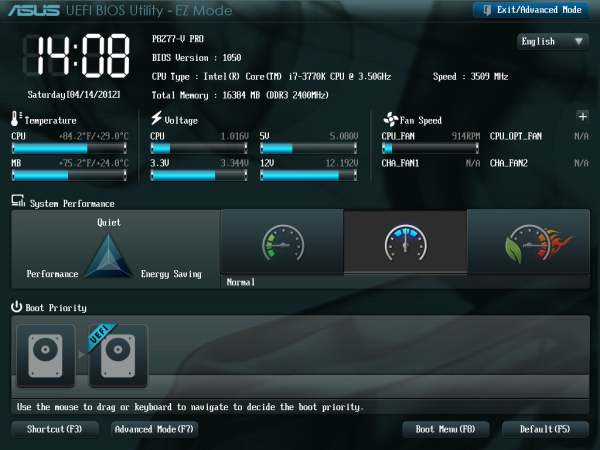
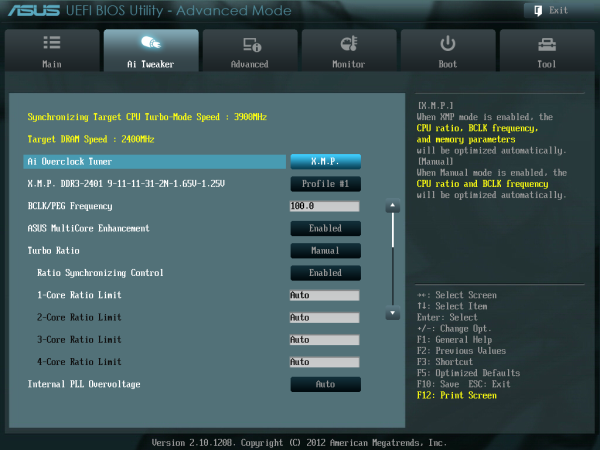
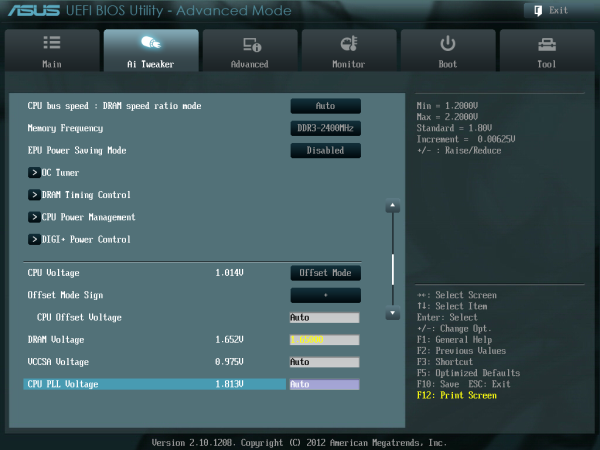
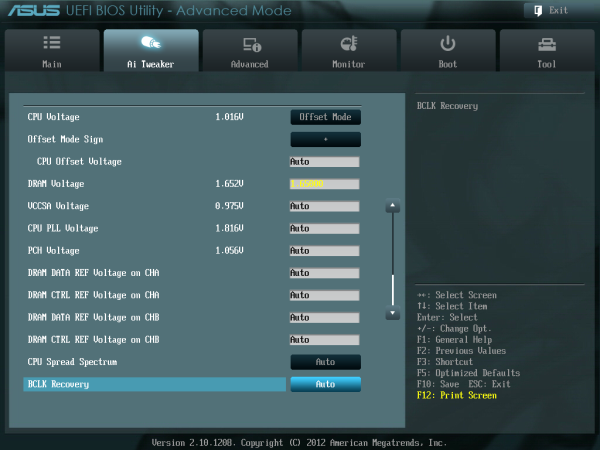
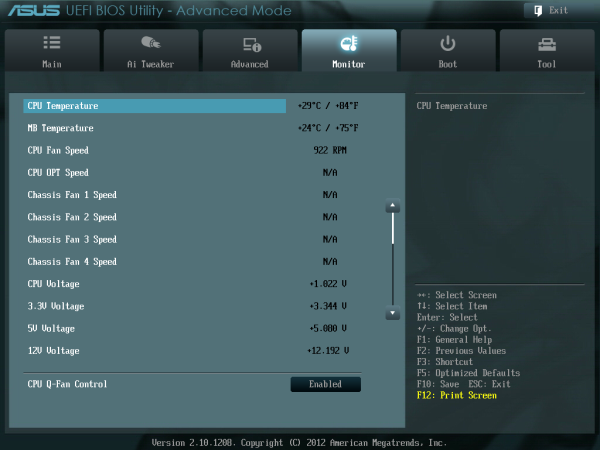







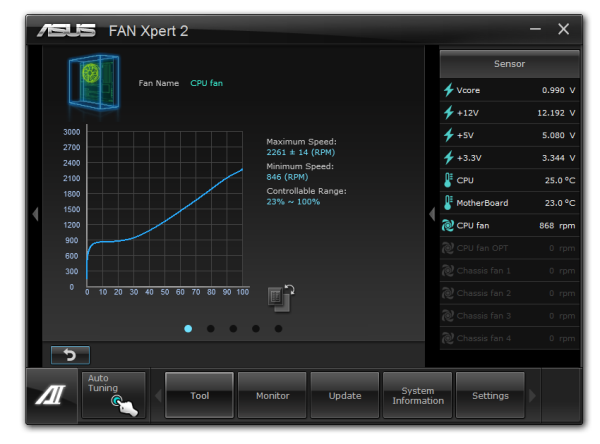
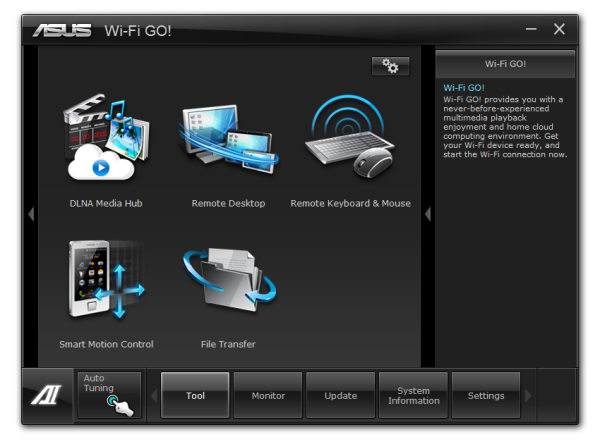
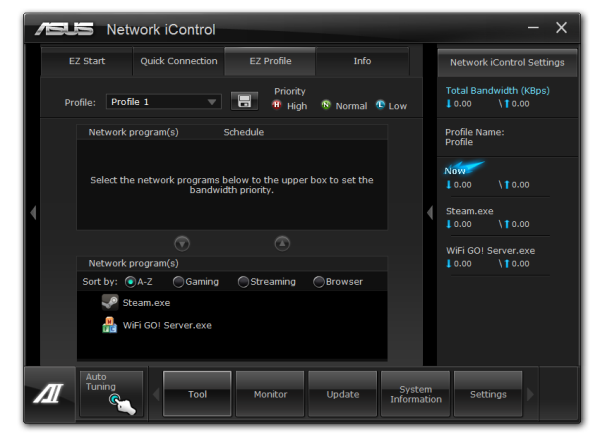
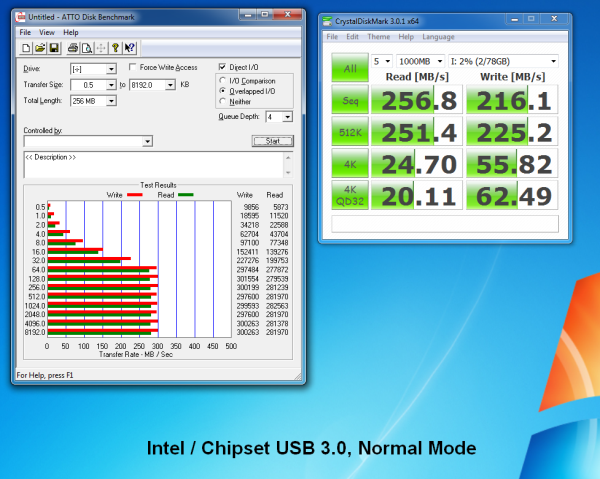
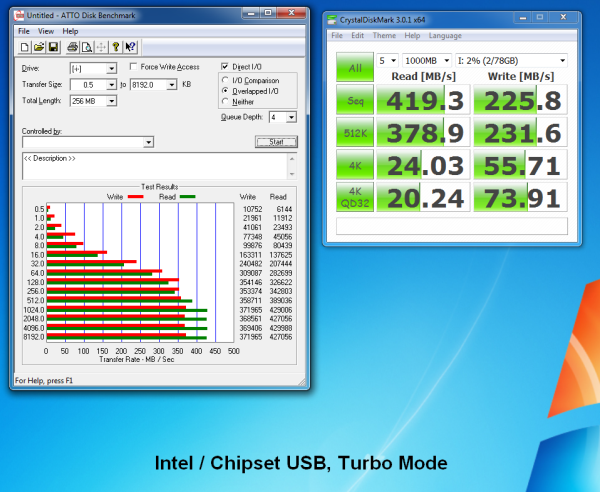
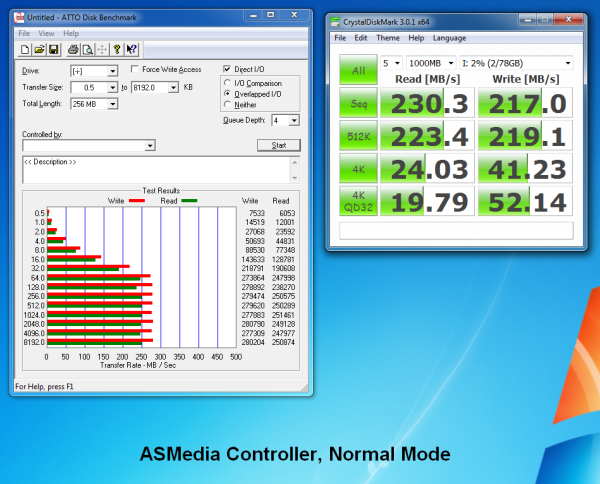
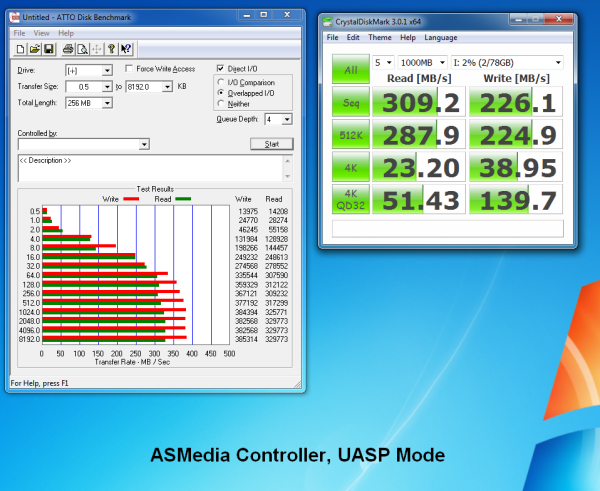
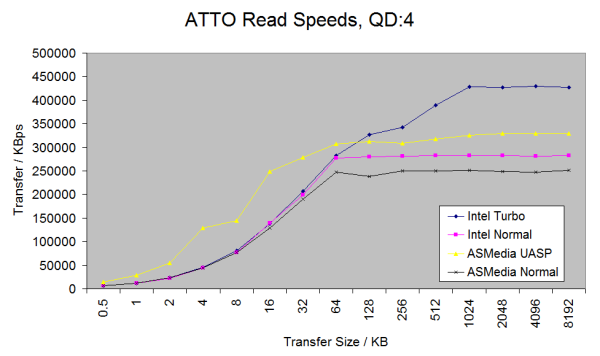















117 Comments
View All Comments
vegemeister - Thursday, May 10, 2012 - link
Yes, it is a very important feature. The Ivy Bridge IGP can drive 3 monitors. 4 display outputs means 3 of them are digital.Discrete GPUs increase idle power consumption, an as of this post none of them have particularly good open source drivers. Some of us just want lots of screens, good compiz performance, and silence.
philipma1957 - Monday, May 7, 2012 - link
I have been building a series of matx htpc/gamer machines.I have one with the basic
Gigabyte GA-B75M-D3H mATX board
and one with the
Gigabyte Ga-h77m-d3h mATX board.
I want to decide between
the ASUS P8Z77- m pro mobo or
the ASUS p8z77-m board and
last but not least the
Gigabyte Intel Z77 LGA 1155 AMD CrossFireX/NVIDIA SLI DVI/HDMI/DisplayPort Dual UEFI BIOS mATX Motherboard G1.SNIPER M3 .
I am liking the two builds I did with the lowend gigabyte boards and some intel i5 t2500t cpus I want a better board but I don't have many reviews to go by.
EnzoFX - Monday, May 7, 2012 - link
It just doesn't make a whole lot of sense to me. Are most DIY'ers really opting for ATX? Should they? I'd bet most people only plug in a video card and maybe one other card such as wireless or even a tuner. Every other possible need they may have would not only be met by mATX but even ITX is pretty full featured these days.You'd think mATX would be what most boards are targeted at, and leaving ATX for extreme builds/bragging rights. It's just like those high end video cards, most people don't buy those, rightfully and importantly so. Those should be the premium prices, and mATX should have a lower price. The focus just feels off.
Zoomer - Monday, May 14, 2012 - link
You mentioned people want mATX board. There by itself probably means that it can command higher prices, due to higher price tolerance of the purchasers.Caeric - Monday, May 7, 2012 - link
Enjoyed the review. I still have an old AMD dual core, and I'm considering a new system in the next couple of months so these help a great deal.I did find one error in the article, under the ASUS board:
"The ASUS P8Z77-V Pro retails at $225-$235, essentially $100 less than the ASRock Z77 Extreme4..."
It should say "...essentially $100 more than the ASRock..."
Movieman420 - Monday, May 7, 2012 - link
Curious as to this controllers' performance vs the ever present Marvell controllers. Does it use a pci-e lane or usb3 for it's bandwidth?FozzyofAus - Monday, May 7, 2012 - link
Great review.I'm leaning towards mATX as well for this build as I've never used more than four expansion slots and currently I'm only using 3 (one is USB3 which won't be needed in the new board).
I'd like to have a bit more room in my current case and the option to reuse this motherboard in a smaller case in future if I upgrade my main rig to Haswell next year.
Any chance of adding Asrock Extreme4-m to the next motherboard roundup?
spronkey - Monday, May 7, 2012 - link
Sorry guys but this review was a bit average. Comment on the various different controllers used by the motherboard manufacturers but don't offer any kind of review on them?The good additions: DPC latency and boot time.
The missing? Well everything else.
I was especially hoping for a comment on the VIA audio on the UD3H - it's been a while since I've seen VIA codecs on mainstream boards.
I'm also amazed that you didn't slam the ASUS board for it's price and lack of features. Realtek 892? On a board that's nearing twice the cost of the ASRock? Seriously?
No comment on the durability of the boards either? Hrm. No separation in testing of the different controllers on each board?
A bit lacking, sorry.
ggathagan - Thursday, May 10, 2012 - link
Perhaps you're commenting on the wrong review.As Ian stated multiple times throughout the review, Asus is using Intel NIC's on their boards, in this case, the Intel 82579V.
Durability is a function of time. Please point out the other motherboard reviews that covered durability.
spronkey - Thursday, May 10, 2012 - link
He stated ASUS were using Intel, sure. But didn't get into any details other than stating they exist about the fact that there are multiple USB3 controllers and SATA controllers on each board. No benchmarks comparing them etc.In fact does it even mention which controllers were tested?
And Durability is a function of construction quality and time. It would be nice to see comments on points such as board weight and flex, quality of soldering, quality of components used on the board (according to an electrical minded person on OCN, Gigabyte uses significantly higher rated MOSFETs than other manufacturers), temperatures of chipsets and VRM circuitry. These are things I can't easily find out by reading manuals.